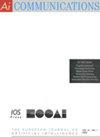利用脉冲深度传统神经学习的无人机辅助植物病害自动识别
IF 1
4区 计算机科学
Q4 COMPUTER SCIENCE, ARTIFICIAL INTELLIGENCE
引用次数: 3
摘要
早期发现和诊断植物病害可显著减少产量损失。基于图像的植物病害自动识别(APDI)工具已开始广泛应用于病虫害防治策略。目前的APDI系统依赖于在实验室条件下拍摄的图像,这使得小农无法使用APDI系统。在这项研究中,我们调查了小农是否可以使用他们的基本和廉价的无人驾驶汽车(uav)利用APDI系统与标准摄像头。为了创建类似无人机拍摄的番茄图像,我们使用图像处理工具从公共数据集构建了一个新的数据集。该数据集包括分为10类(疾病或健康)的番茄叶片照片。为了检测这些疾病,我们开发了一种新的混合检测模型SpikingTomaNet,该模型将一种新的深度卷积神经网络模型与spike神经网络(SNN)模型相结合。由于SNN的事件驱动架构,该混合模型为植物病害识别提供了更高的准确率,并为电池受限的无人机提供了更高的能源效率。在该混合模型中,从CNN模型中提取的特征被用作snn的输入层。为了评估我们的方法的性能,首先,我们将开发的混合模型中的CNN模型与众所周知的AlexNet, VggNet-5和LeNet模型进行了比较。其次,将所建立的混合模型与三种已知模型与SNN模型组合而成的混合模型进行了比较。为了训练和测试所提出的神经网络,利用数据集中的32022张图像。结果表明,SNN方法显著提高了成功率,特别是在增强数据集上。实验结果表明,混合模型在原始图像上的准确率为97.78%,在生成的数据集上的准确率为59.97% ~ 82.98%。此外,结果表明,与已知模型和LeNet及其与SNN的结合相比,所提出的混合模型在疾病分类方面具有更好的整体准确性。本文章由计算机程序翻译,如有差异,请以英文原文为准。
Drone-assisted automated plant diseases identification using spiking deep conventional neural learning
Detection and diagnosis of the plant diseases in the early stage significantly minimize yield losses. Image-based automated plant diseases identification (APDI) tools have started to been widely used in pest managements strategies. The current APDI systems rely on images captured in laboratory conditions, which hardens the usage of the APDI systems by smallholder farmers. In this study, we investigate whether the smallholder farmers can exploit APDI systems using their basic and cheap unmanned autonomous vehicles (UAVs) with standard cameras. To create the tomato images like the one taken by UAVs, we build a new dataset from a public dataset by using image processing tools. The dataset includes tomato leaf photographs separated into 10 classes (diseases or healthy). To detect the diseases, we develop a new hybrid detection model, called SpikingTomaNet, which merges a novel deep convolutional neural network model with spiking neural network (SNN) model. This hybrid model provides both better accuracy rates for the plant diseases identification and more energy efficiency for the battery-constrained UAVs due to the SNN’s event-driven architecture. In this hybrid model, the features extracted from the CNN model are used as the input layer for SNNs. To assess our approach’s performance, firstly, we compare the proposed CNN model inside the developed hybrid model with well-known AlexNet, VggNet-5 and LeNet models. Secondly, we compare the developed hybrid model with three hybrid models composed of combinations of the well-known models and SNN model. To train and test the proposed neural network, 32022 images in the dataset are exploited. The results show that the SNN method significantly increases the success, especially in the augmented dataset. The experiment result shows that while the proposed hybrid model provides 97.78% accuracy on original images, its success on the created datasets is between 59.97%–82.98%. In addition, the results shows that the proposed hybrid model provides better overall accuracy in the classification of the diseases in comparison to the well-known models and LeNet and their combination with SNN.
求助全文
通过发布文献求助,成功后即可免费获取论文全文。
去求助
来源期刊

AI Communications
工程技术-计算机:人工智能
CiteScore
2.30
自引率
12.50%
发文量
34
审稿时长
4.5 months
期刊介绍:
AI Communications is a journal on artificial intelligence (AI) which has a close relationship to EurAI (European Association for Artificial Intelligence, formerly ECCAI). It covers the whole AI community: Scientific institutions as well as commercial and industrial companies.
AI Communications aims to enhance contacts and information exchange between AI researchers and developers, and to provide supranational information to those concerned with AI and advanced information processing. AI Communications publishes refereed articles concerning scientific and technical AI procedures, provided they are of sufficient interest to a large readership of both scientific and practical background. In addition it contains high-level background material, both at the technical level as well as the level of opinions, policies and news.
 求助内容:
求助内容: 应助结果提醒方式:
应助结果提醒方式:


